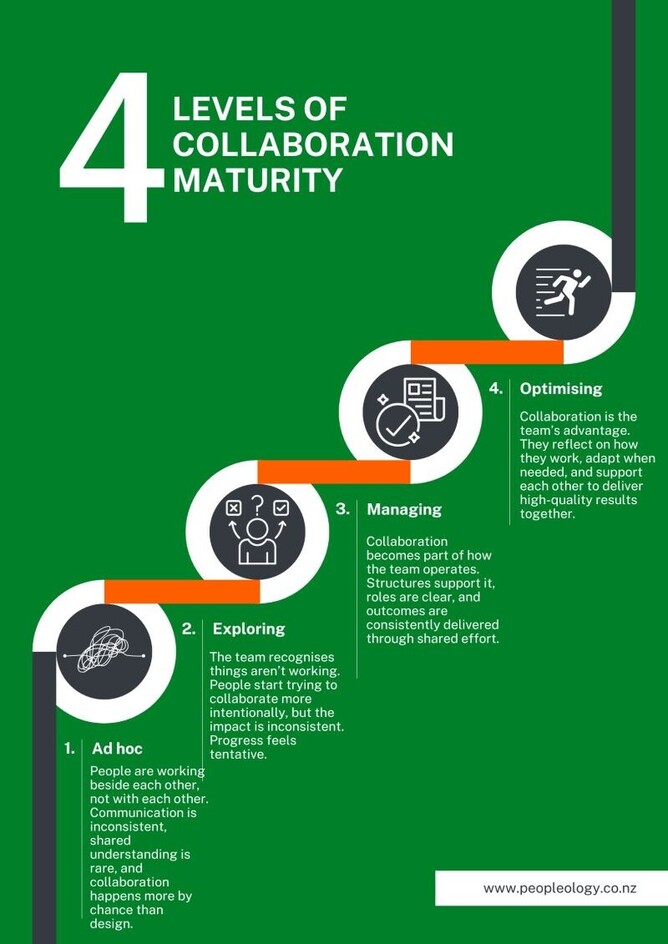At Peopleology, we know that effective collaboration doesn’t happen by accident, it’s something teams build, refine, and grow over time. The Collaboration Maturity Model (Col-MM) describes this journey in four key stages, showing how teams evolve from working beside each other to truly working with each other.
1. Adhoc
People are working beside each other, not with each other. Communication is inconsistent, shared understanding is rare, and collaboration happens more by chance than by design.
2. Exploring
The team recognises things aren’t quite working. People start trying to collaborate more intentionally, but the results are mixed. Progress feels tentative and uneven.
3. Managing
Collaboration becomes part of how the team operates. Structures support it, roles are clear, and outcomes are consistently delivered through shared effort and accountability.
4. Optimising
Collaboration becomes the team’s competitive advantage. The team reflects on how they work, adapts quickly when needed, and supports each other to deliver high-quality results together.
These levels don’t just describe capability, they help teams make sense of where they’re at and what might help them move forward.
Most teams I work with sit somewhere between Exploring and Managing.
Reaching Optimising takes clarity, intention, and leadership that recognises collaboration as a real lever for performance, not just a buzzword.
At Peopleology, we help teams understand where they are on the collaboration journey and what it takes to move forward with purpose.


